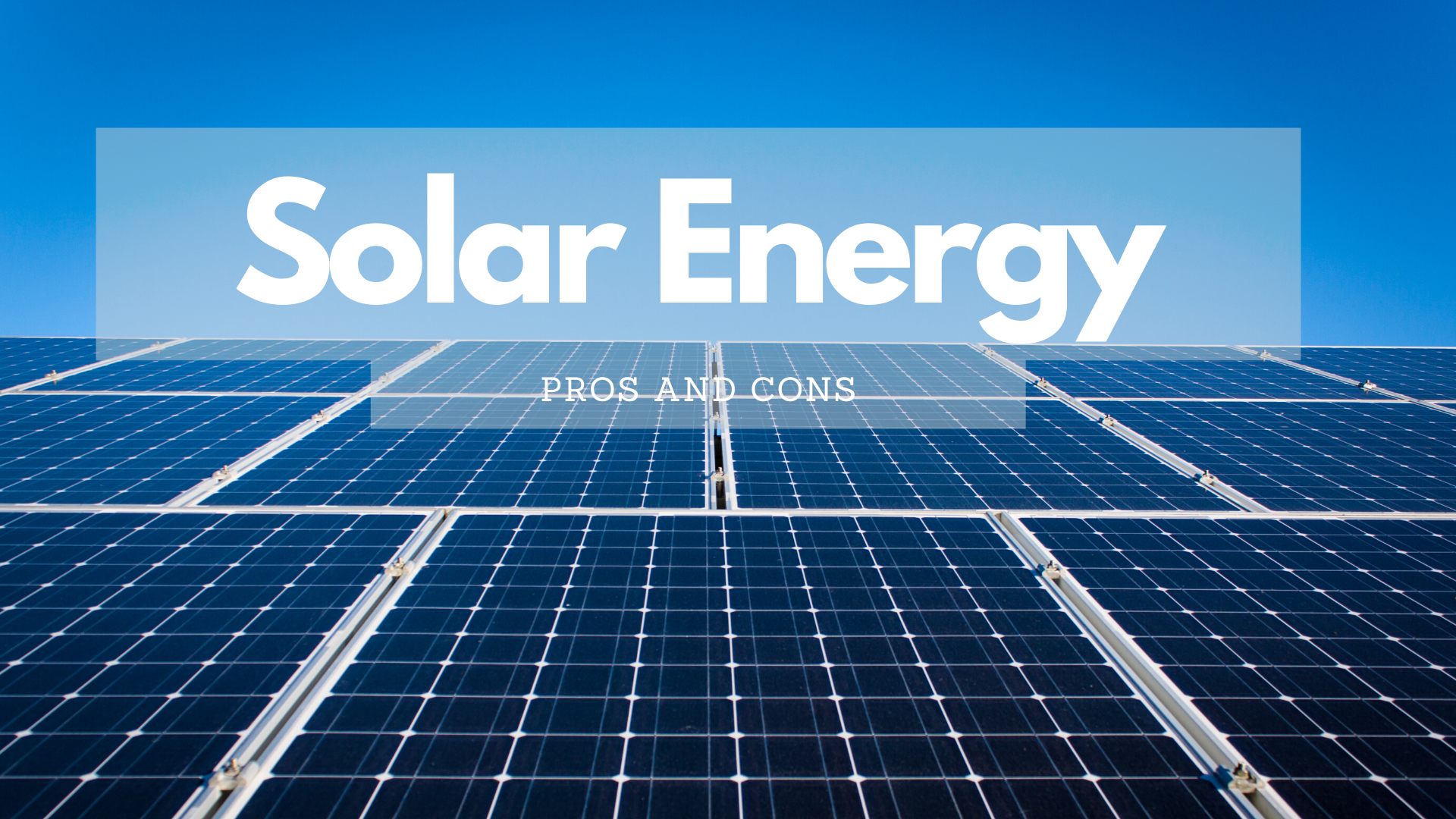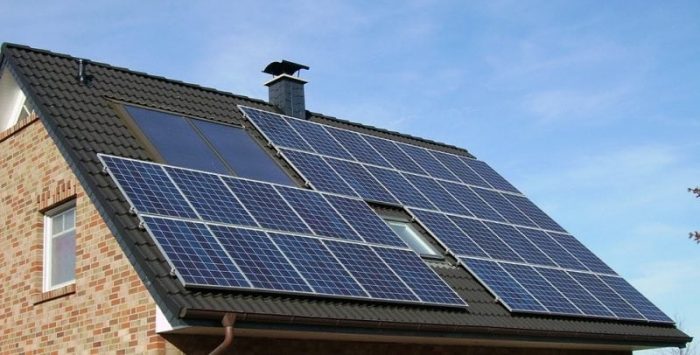
Solar energy pros and cons make it a good option in some circumstances and not in others. Some solar energy pros are environmentally friendly, no noise, and a passive energy source. Some solar energy cons are high upfront costs, the requirement of sunlight, and intermittent energy.
The solar energy market has been growing substantially over the past few years, with more companies and countries investing in it all the time. Yet when compared to other forms of energy, what are the benefits it provides? What are the drawbacks to solar energy? Let’s take a closer look at the pro/cons of solar energy.
“I’d put my money on the sun and solar energy. What a source of power! I hope we don’t have to wait until oil and coal run out before we can tackle that.” — Thomas Edison
Before we take a look at the pros/cons of solar energy, let’s define solar energy. Solar energy is the energy that the sun releases, and we can capture it using a wide array of technology. Different sources of solar energy exist, such as solar thermal energy, which involves collecting the heat that comes from the sun’s rays. However, when most people refer to solar energy they are talking about the solar light that hits the Earth’s surface and the method of capturing this energy by using photovoltaic systems.
Photovoltaic panels or photovoltaic cells work by separating the electrons from the atoms that hit the panel, which creates electricity. Silicon is typically the material employed in photovoltaic cells, although research into other materials, like perovskite, is being done.
The Pros of Solar Energy
Solar energy has a lot of things going for it, like being renewable, fairly clean, requiring little maintenance and being quiet.
Solar Energy Pros:
- Environmentally Friendly
- Sustainable energy source
- Widely available across the globe
- lowered cost of electricity
- No noise
- Little maintenance needed
Solar Energy is Clean and Environmentally Friendly
Though there are some initial emissions involved with creating the solar cells and installing them, once the solar panels are installed there is almost no pollution from solar panels. Once a solar panel has been placed on a home or business it simply gathers solar energy, with no emissions to speak of.
“The use of solar energy has not been opened up because the oil industry does not own the sun.” — Ralph Nader
Sustainability
Solar energy is usually dependable, sustainable and renewable. Fossil fuels are of a finite quantity, they are a non-renewable resource. Once we use them up, they are gone. However, solar energy is sustainable and as long as the sun is around we will have a constant source of energy from it. The Earth receives around 170,000 terawatts of solar energy continuously, which is roughly 10,000 times what is needed to power the world. If we could harness even a fraction of this energy it would meet our energy needs.
Wide Availability
The sun shines everywhere on earth, which means that solar energy is an option for every country. There are differences in which regions of the globe will receive the most sunlight, such as the fact that regions close to the equator will receive more solar energy. Differences between regions are on the order of kilowatt-hours, and the sunniest parts of the US will receive about 4.7 kWh for every kilowatt of solar panels, while the areas of the US that see the least sunlight will produce only 2.9 kWh a day. Despite these differences, everywhere on Earth sees enough sunlight to make solar power a viable investment. The exception to this is that solar energy can only be harnessed during the day. The fact that solar energy is unavailable at night can be addressed with batteries to store solar energy for use at night.

Photo: By Isofoton.es – Own work, CC BY 3.0, https://commons.wikimedia.org/w/index.php?curid=14611266
Lowered Electricity Costs
Solar energy offers the potential to reduce the amount of money people spend on electricity bills. As fossil fuels grow rarer they also grow more expensive. Installing solar panels on a home could save someone more than one thousand dollars a year, with certain areas of California saving more than $28,000 during the course of twenty years. Installation prices for most places will be paid off in only a few years.
Little Maintenance and No Noise
Though solar panels used to require a lot of maintenance, this isn’t the case anymore. Modern solar panels require very little maintenance as the photovoltaic cells last for around 20-25 years on average. There are also no or few moving parts in solar installations, which also helps keep maintenance costs down. This also means that solar panels are a very quiet way of gathering energy, especially when compared to things like wind power.
The Cons of Solar Energy
Though there are many benefits to investing in solar energy, there are also some known drawbacks. The drawbacks of solar energy include the following.
Solar Energy Cons:
- High initial investment
- Intermittency in energy supply
- Need to store energy
- High cost of storing excess energy
- Requires a large space to install
High Initial Cost
Solar panels are expensive to invest in at first. They have a high initial price point for installation. The current average cost for the installation of a solar panel on a home is about one thousand dollars. Depending on the energy needs of a person’s house and family, a homeowner may need to buy more than one solar panel.
Intermittent Energy Gain
The biggest drawback of solar panels is that they offer intermittent energy gain, due to the fact that the sun shines only half the day. Note that half a day of sunshine is a best-case scenario as issues like geographical location and weather patterns that bring clouds can cut the amount of solar energy that solar panels absorb even further. Solar cells are also negatively impacted by air pollution, so panels that exist in highly polluted areas are less efficient than panels in cleaner areas.
“I think the future for solar energy is bright.” — Ken Salazar
Expensive To Store Energy
Solar energy can be stored within batteries for later use, to get people through times of the day when the sun isn’t shining. Yet the batteries used to store solar energy are large and complex, which means they are also very expensive. Storage costs for the batteries must also be factored into the costs of the batteries, and the batteries must also be replaced on occasion.

Solar panels require a lot of space on a house, and depending on your energy needs you may require more than one. Photo: Skeeze via Pixabay, CC0
Setup Requires A Lot Of Space
Solar panels necessitate a good amount of space in order to be installed. This means that they may not be practical options for smaller homes and businesses. The feasibility of investing in solar panels can be ascertained by looking at the power density of a solar installation, or the watts per square meter. Low power density for an installation means that the real estate cannot provide enough power to compensate for the price of the panels.
Summing Up
Ultimately solar panels can be used throughout most of the world, provide clean and renewable energy, and can save money in the long run. The barriers to entry include high initial set up costs, and high costs for the storage of energy. Thankfully, research into solar technology is constantly finding ways to improve the efficiency of solar cells, meaning that solar cells are getting smaller and cheaper as time goes on.
There have also been substantial improvements in battery storage technology. The Tesla company is continuing to invest in their Powerwall battery options, which are small (as far as solar batteries go) batteries that can be mounted to the wall of a garage or similar room.
As solar technology continues to improve, we should expect that the cost-related drawbacks of solar energy will become fewer while the positive aspects of solar energy will become greater.









